Leak testing
Leak testing or leak detection is a non-destructive testing method for the detection and localisation of leaks in pressure and vacuum systems.
"Leakage" means liquid or gas passing through a leak regardless of its physical size. A leak can be, for example, a crack, a breach, a notch or a hole, the gas (e.g. air) or liquid (e.g. water).
Leakages can significantly endanger the operational safety of vacuum or pressure systems (e.g. pressure vessels). Dangerous gases or liquids may escape. The leak test is also carried out for pyrotechnic devices, electronic parts, air conditioning systems, food packaging, etc..
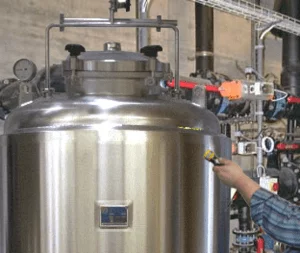
Detection of vessel decompression with fluorescent concentrate H 849
The following table illustrates the relationship between the leak rate, the size of the leak and the resulting Leakage:
| Leckagerate [m³ Pa/s] |
Durchmesser des Lecks |
Leckage durch das Leck bei Δp = 1 bar |
| 10¹ | 1,0 mm | Water is leaking out |
| 10-1 | 0,1 mm | Water is dripping |
| 10-3 | 0,03 mm | Waterproof but gas permeable |
| 10-5 | ≈ 3 µm | 1 air bubble ( ≈1 mm³) in 10 seconds |
| 10-7 | ≈ 0,1 µm | approx. 1 cm³ gas loss in 12 days |
| 10-9 | -- | approx. 3 cm³ gas loss in 1 year |
| 10-11 | -- | approx. 1 cm³ gas loss in 300 years |
Bubble test
Showing 1 - 7 out of 7
Page 1 out of 1
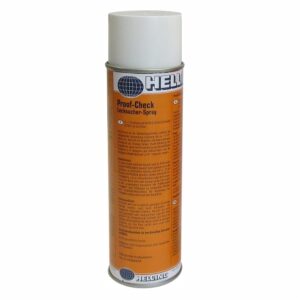 |
Proof Check
Leak testing foam indicator Wetting agent for leak testing of
|
|
|
616.000.001
|
|
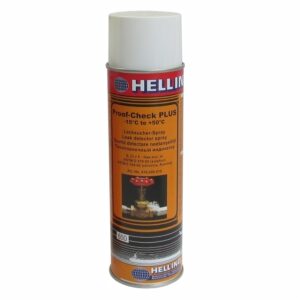 |
Proof Check PLUS
Leak testing foam indicator Wetting agent with high detection sensitivity for leak testing (leak detection) of e.g.
|
|
|
616.000.010
|
|
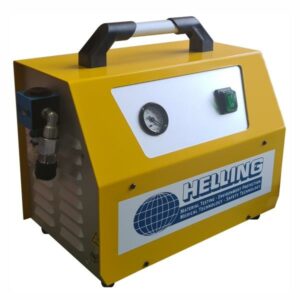 |
Vacuum leak detector
The vacuum leak detector
|
|
|
611.010.001
|
|
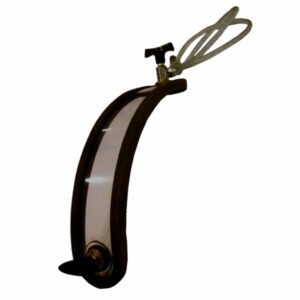 |
Vacuum goggles for circumferential seams
OPTIONAL
|
|
|
611.001.002
|
|
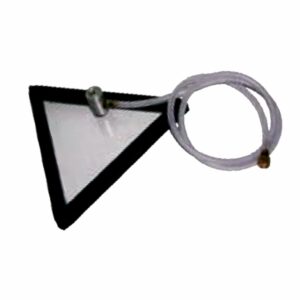 |
Vacuum frame for corner welds
OPTIONAL
|
|
|
611.001.033
|
|
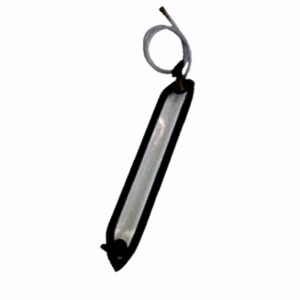 |
Vacuum frame for fillet welds
OPTIONAL
|
|
|
611.001.030
|
|
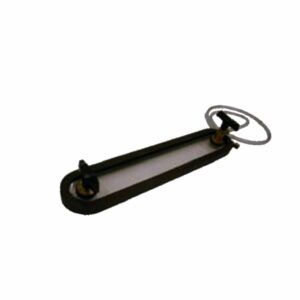 |
Vacuum frame for butt welds
OPTIONAL
|
|
|
611.001.031
|
Acoustic leak test methods
Showing 1 - 1 out of 1
Page 1 out of 1
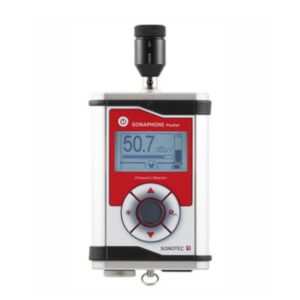 |
SONAPHONE Pocket
Simple and compact ultrasonic flaw detector SONAPHONE Pocket for maintenance, and for quick and easy inspection of small leaks.
|
|
|
613.100.015
|
Pressure test
Showing 1 - 4 out of 4
Page 1 out of 1
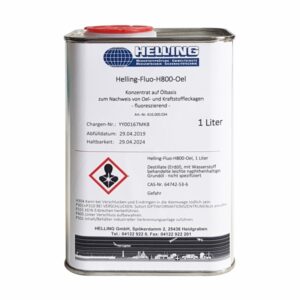 |
Fluo H800
Helling Fluo H800 Öl Oil-based concentrat
|
|
|
616.000.033
|
|
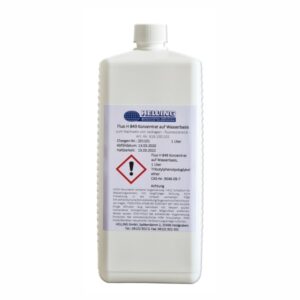 |
Fluo H 849
Helling Fluo 849 Konzentrat Water-based concentrate
|
|
|
616.100.102
|
|
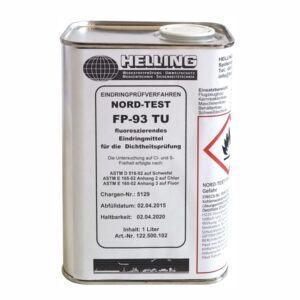 |
NORD-TEST FP 93 TU
Under UV irradiation yellow-green fluorescent penetrant for leak testing Do not remove with water! |
|
|
122.500.102
|
|
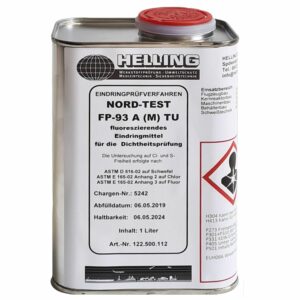 |
NORD-TEST FP 93 A(M) TU
Under UV irradiation yellow-green fluorescent penetrant for leak testing Do not remove with water! |
|
|
122.500.112
|
 +49 4122 922 - 0
+49 4122 922 - 0  info@helling.de
info@helling.de  Mo. - Do. : 8:00 - 16:30 Fr. : 8:00 - 13:00
Mo. - Do. : 8:00 - 16:30 Fr. : 8:00 - 13:00


